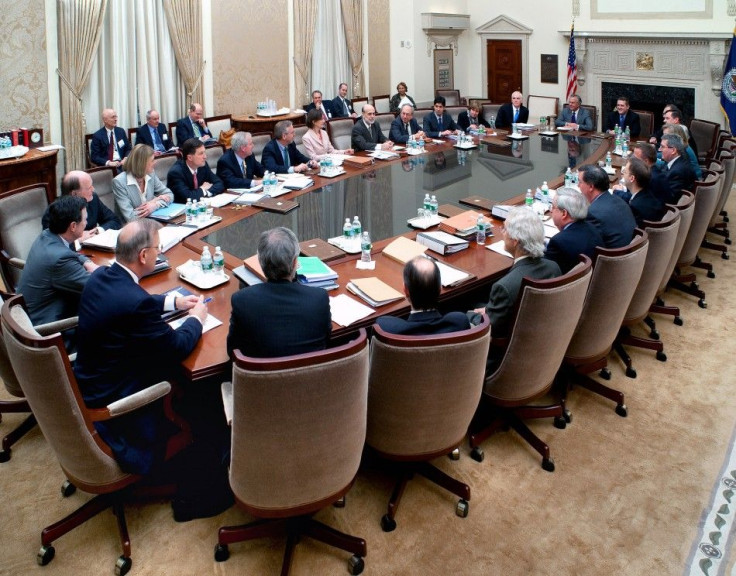Federal Reserve: A Once Secretive Institution Moving Toward Greater Transparency
Commentary

Fed-watchers two decades ago had a hard time speculating what the central bank's decisions were because the Fed said relatively little about its monetary policy and allowed actions to speak for themselves. However, efficient markets do not like to be kept guessing.
The brief statement released after Tuesday's Federal Open Market Committee meeting did not mention the agency's new strategy that would signal its intentions on rates in a more systematic way. The details of Tuesday's discussion are likely to be released early next year.
The Government Accountability Office, a nonpartisan research arm of Congress, called on the U.S. central bank to take additional steps to boost disclosures to the public.
"Failing to make the process and decisions more transparent can decrease confidence in the Federal Reserve System and has resulted in questions about the integrity of Reserve Banks' operations and the appearance of conflicts of interest," the GAO said in an October report.
Before Alan Greenspan chaired the Federal Reserve in 1987, the agency was generally a secretive institution that did not clarify what its objectives and strategies were. The mystery led to popular books about the Fed with titles like The Secrets of the Temple, published in 1987.
Ben Bernanke, who took over the helm in 2006 and turned 58 on Tuesday, has pledged to make the Federal Open Market Committee -- the monetary policymaking body of the Federal Reserve System -- even more explicit to the public.
The Fed has been using the same wording since March 2009 in its FOMC statements to describe how long the central bank expects interest rates to remain at 0 to 0.25 percent -- "for an extended period."
Three years after Fed officials took short-term interest rates nearly to zero, the central bank made its first move to project its Fed funds rate changes with more clarity in August 2011 by telling the public it intends to keep the federal funds rate at exceptionally low levels "at least through mid-2013."
Fed Shouldn't Be a Source of Instability Itself
"FOMC communication can help inform the public's expectations of the future course of short-term interest rates, providing the Committee with increased influence over longer-term rates and hence a greater ability to achieve its macroeconomic objectives," Bernanke suggested in 2004.
The current setting of Fed funds rate is on its own of little importance to the market when it comes to making decisions about investment, labor supply and price setting. Instead, those decisions are more driven by expectations of future overnight lending rates.
When investors can see how long the Fed expects to keep the short-term interest rates low, they would push long-term rates down even further, which could stimulate investment, spending and hiring.
Timeline of Fed Communication Changes
FOMC meetings were long held in relative secrecy. The Committee maintained extensive minutes that were confidential and only published a sparse annual report called Records of Policy Actions until 1967.
In a review of its policies in 1967 the FOMC decided to publish its minutes about 90 days after a FOMC meeting. At the same time the Fed introduced a new monthly bulletin covering financial and economic issues.
From June 1967 to March 1976, the Memorandum of Discussion served as the most detailed account of the discussion at each FOMC meeting.
Since 1967, complete transcripts of the FOMC meetings were made available at the Fed's website with a delay of 5 years.
The FOMC released its first semiannual economic projections in 1979. Four years later, the central bank began to publish "Beige Book," which summarizes economic conditions in each Federal Reserve district.
It took until 1994 before the Fed started releasing a regular statement after its policymaking meetings.
In 2000, the FOMC began releasing a statement after every meeting and started to include an assessment of the balance of risks to achieving its objectives. The results of the FOMC roll-call vote were added to the post-meeting statement in 2002.
In 2004, the FOMC shortened the release lag of its minutes to three weeks, from six weeks. Three years later, the FOMC decided to release its economic projections four times a year.
This year, Bernanke began to hold press briefings four times a year to present the FOMC's current economic projections and to provide additional context for policy decisions. These appearances are closely-monitored by the market.
Transparency: a Two-Sided Coin
In an economy where investors have imperfect information about monetary policy, greater transparency could help eliminate market volatility that arises when investors aren't certain of the Fed's next move. The Fed shouldn't become a source of instability itself.
However, it should be noted that potential downside risks exist when certainty is provided. If the market believes that the Fed will always do what it can to shore up the economy in times of trouble, then they will be more inclined to take on the kind of risks that invite trouble.
© Copyright IBTimes 2024. All rights reserved.






















